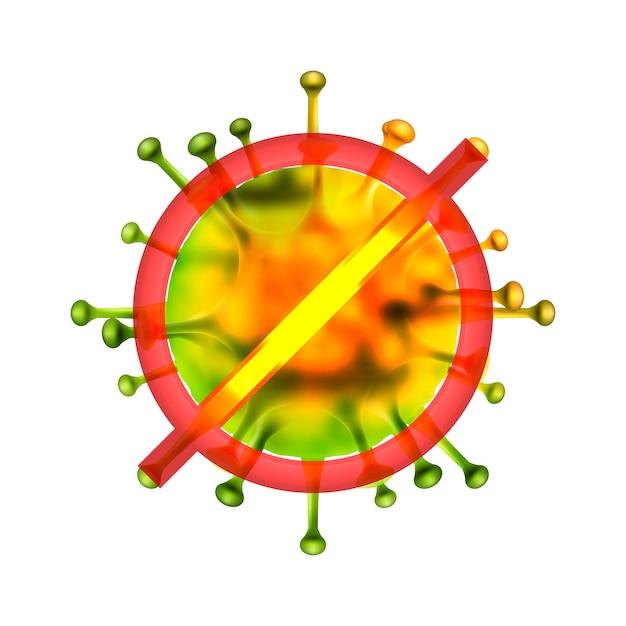Public health has always played a crucial role in ensuring the well-being of individuals and communities. As we step into the year 2023, it becomes increasingly vital to stay informed about the future trends that will shape the landscape of public health. From advancements in healthcare technology to improving our healthcare system, there are several key areas to explore.
One of the significant trends that will shape the future of public health is the integration of health informatics. With the rapid advancements in technology, the use of electronic health records, wearable devices, and artificial intelligence will revolutionize how we approach healthcare. This integration will lead to improved patient care, more efficient health monitoring, and better data analysis for personalized treatment plans.
Additionally, understanding the changes in the healthcare system and how we can improve it will be crucial for the future of public health. As we strive for universal access to quality healthcare, there is a need to address the four major healthcare services: prevention, treatment, rehabilitation, and palliative care. By ensuring equitable distribution of these services, we can create a healthcare system that truly prioritizes the well-being of all individuals.
In this blog post, we will delve deep into these topics and explore the five levels of healthcare, future trends in public health, and the changes that lie ahead. So, let’s take a journey into the future of public health and discover the innovations that will shape our lives for the better.

Future Trends in Public Health
As we step into 2023, it’s becoming increasingly clear that the field of public health is undergoing some exciting and groundbreaking advancements. From technological innovations to shifts in focus, here are some future trends that are set to shape the landscape of public health:
1. Embracing Telehealth: Health at Your Fingertips
Thanks to the wonders of modern technology, healthcare is no longer confined to the four walls of a hospital. Telehealth, which allows patients to access medical services remotely, is gaining immense popularity. Through video consultations and remote monitoring devices, individuals can now receive healthcare guidance without leaving the comfort of their homes. No more sitting for hours in crowded waiting rooms or trying to determine if your cough sounds “wet” or “dry” over the phone to a busy nurse.
2. Data-Driven Decision Making: Gaining Insights from Numbers
You’ve heard the saying, “knowledge is power,” right? Well, in public health, data is that power. With the rise of big data analytics, we can now collect and analyze vast amounts of health-related information. By crunching these numbers, scientists and policymakers can identify patterns, predict disease outbreaks, and tailor interventions more effectively. It’s like a superpower that allows us to stay one step ahead in the battle against illness. Excelsior!
3. Personalized Medicine: Health Care with a Personal Touch
One size fits all? Not in the future of public health! Genomic medicine is on the rise, allowing us to understand how our genetic makeup influences our health. By decoding our DNA, we can tailor prevention strategies and treatments to individual needs. It’s like having a healthcare plan custom-tailored for your genes. And who doesn’t love personalized attention?
4. Climate Change Adaptation: Protecting Our Health, One Degree at a Time
The earth is getting hotter, and it’s affecting our health. Rising temperatures, extreme weather events, and changes in disease patterns are some of the challenges we face due to climate change. Public health is increasingly focusing on adaptation strategies to protect vulnerable populations and mitigate the health risks associated with a changing climate. We’ll be superheroes fighting against both viruses and villainous global warming!
5. Health Equity: Bridging the Gap for All
Inequities in healthcare access and outcomes have long plagued society. However, the future of public health is all about bridging that gap. Efforts to address structural inequalities, improve access to healthcare for disadvantaged communities, and reduce health disparities are gaining momentum. It’s time to ensure that everyone has an equal opportunity to fight the battle of good health. After all, saving the world means saving every single person in it!
6. Artificial Intelligence in Public Health: When Robots Join the Fight
Yes, you read that right. The future of public health might involve a little help from robots. Artificial intelligence (AI) is being integrated into public health practices, aiding in data analysis, early disease detection, and even surgical procedures. It’s like having a brilliant assistant who never needs a coffee break or calls in sick. Let’s just hope they don’t develop a sense of humor—imagine AI robots telling health jokes!
As we move forward into the future, these trends offer hope and excitement for the field of public health. From the convenience of telehealth to the power of data-driven decision making, we’re on the cusp of a transformative era. So, get ready, strap on your high-tech gadget, and join the fight for a healthier tomorrow!

FAQ: What are some future trends in public health
In the ever-evolving field of public health, it’s crucial to stay abreast of the latest trends and developments. From advancements in healthcare systems to the future of health informatics, this FAQ-style subsection will provide comprehensive insights into the exciting future of public health.
What are the four major healthcare services
To ensure the well-being of individuals and communities, public health encompasses four major healthcare services:
Preventive Services:
Keeping diseases at bay is the golden rule! Preventive services focus on health promotion, disease prevention, and early detection. They include routine check-ups, vaccinations, screenings, and education campaigns that empower individuals to lead healthier lives.
Diagnostic Services:
When it comes to diagnosing illnesses and conditions, the future brings innovative technologies. Enhanced diagnostic services will utilize artificial intelligence, genetic testing, and precision medicine to detect diseases accurately and at early stages, leading to more effective treatments.
Treatment Services:
Treating illnesses and managing chronic conditions are at the core of public health. The future holds promise for personalized medicine, breakthrough therapies, and targeted treatments utilizing cutting-edge technologies like gene editing and regenerative medicine.
Rehabilitation Services:
Assisting individuals in recovering their physical and mental well-being is paramount. Future trends in rehabilitation services include more holistic and integrated approaches, combining physical therapy, mental health support, and assistive technologies to improve overall quality of life.
How can we improve our healthcare system
Improving our healthcare system is an ongoing endeavor, and there are several ways we can work towards achieving this goal:
Increasing Access:
Ensuring affordable and equitable access to healthcare services is crucial. By expanding insurance coverage, reducing barriers, and enhancing telehealth options, more individuals can receive the care they need.
Enhancing Prevention Efforts:
Prevention truly is the best medicine! By investing in preventive healthcare, we can address health issues before they become severe and costly to treat. Promoting healthy lifestyles, advocating for vaccination programs, and implementing early intervention strategies all contribute to a healthier population.
Strengthening Primary Care:
A robust primary care system forms the backbone of any efficient healthcare system. By incentivizing primary care providers, improving care coordination, and focusing on preventive measures, we can enhance the overall quality of care while reducing unnecessary hospitalizations.
Embracing Health Technology:
The future of healthcare lies in leveraging advancements in technology. Embracing electronic health records, health informatics, telemedicine, and wearable devices can streamline processes, improve accuracy, and enhance patient care.
What is the future of health informatics
Health informatics, the intersection of healthcare and information technology, holds immense potential for shaping the future of public health. Here’s what we can expect:
Data-driven Decision Making:
The future will witness an explosion of health data. Health informatics will enable healthcare providers to analyze vast amounts of information to make data-driven decisions, identify trends, and develop personalized treatment plans.
Artificial Intelligence (AI) Revolution:
AI will play a pivotal role in healthcare. From predicting disease outbreaks to aiding in diagnosis and treatment, AI algorithms will sift through mountains of data to provide invaluable insights for effective decision-making.
Connected Healthcare Ecosystems:
Health informatics will facilitate the seamless flow of information between healthcare professionals, patients, and various healthcare systems. Electronic health records, interoperability, and shared databases will enable better care coordination and enhance patient safety.
Telehealth and Remote Monitoring:
Telehealth and remote monitoring will become integral to healthcare delivery. Virtual consultations, real-time monitoring of vital signs, and wearable health devices will allow for more convenience, improved access, and timely interventions.
What are the 5 levels of healthcare
The healthcare system operates through a hierarchical structure with five levels:
Primary Care:
Primary care serves as the initial point of contact for individuals seeking healthcare. It focuses on preventive care, general health concerns, and managing chronic conditions. This level includes regular check-ups, screenings, and consultations with general practitioners or family physicians.
Secondary Care:
Secondary care involves specialized medical services provided by healthcare professionals such as cardiologists, dermatologists, or orthopedic surgeons. Individuals are usually referred to secondary care by primary care providers.
Tertiary Care:
Tertiary care offers highly specialized and advanced medical interventions. This level comprises specialized hospitals, research centers, and teaching institutions equipped with cutting-edge technology and expert healthcare professionals.
Quaternary Care:
Quaternary care encompasses highly specialized and experimental interventions beyond tertiary care. It involves complex surgeries, advanced treatments for rare diseases, and clinical trials. Quaternary care facilities often collaborate with research institutions.
Home Care:
Home care provides medical services to individuals who require assistance but can be treated in the comfort of their homes. This level includes home health nurses, palliative care, and support services for patients with chronic conditions or terminal illnesses.
What are the changes in healthcare
The future of public health will bring about exciting changes that will revolutionize the healthcare landscape:
Patient-Centered Care:
Healthcare will shift towards an approach that prioritizes the individual patient’s needs, preferences, and goals. Shared decision-making, patient empowerment, and personalized treatments will become the norm.
Holistic Health:
Recognizing that well-being relies on the integration of physical, mental, and social factors, holistic health approaches will gain prominence. Public health efforts will encompass mental health support, social determinants of health, and lifestyle interventions.
Global Collaboration:
Given the interconnectedness of our world, global collaboration in healthcare will be vital. Sharing knowledge, best practices, and resources between countries will help in addressing global health challenges, pandemics, and emerging diseases swiftly and effectively.
Preventive Technology:
Advancements in technology will play a pivotal role in preventive healthcare. Wearable devices, mobile health apps, and genetic testing will empower individuals to proactively monitor their health, make informed lifestyle choices, and prevent diseases before they occur.
Population Health Management:
Population health management emphasizes improving the health outcomes of entire populations rather than just individuals. Future trends will focus on interventions that address social determinants of health, health equity disparities, and population-based preventive measures.
As we step into the future of public health, numerous exciting trends await us. From leveraging health informatics and enhancing healthcare services to driving global collaboration and embracing preventive technologies, these changes will shape a healthier and more resilient world. Stay informed, engage in preventive practices, and be ready to embrace the groundbreaking transformations that lie ahead!
Note: This blog post is for informational purposes only and should not be considered medical or professional advice.
